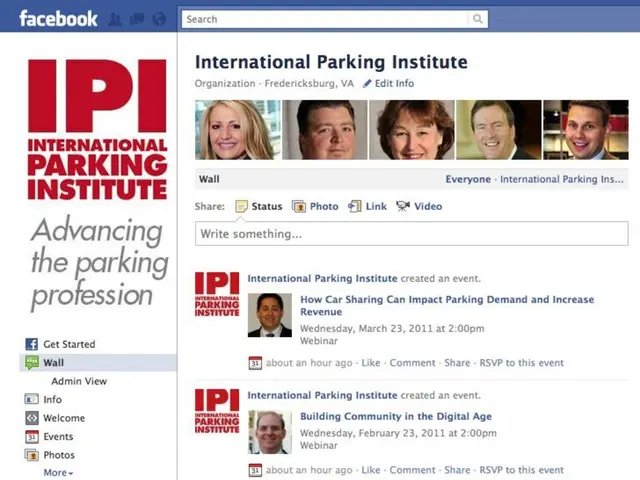Understanding the Nature of Disputes: The Psychological Dynamics Fuelling Confrontations and Strategies for Smarter Resolution
Run-ins with conflict are like life's pesky playlist remix - it's inevitable and unwanted but shows up anyway, whether you want it or not.
Disagreements can stir up arguments in the workplace, family dramas, and everything in between. In this guide, we'll pour the psychology tea and give you smart, evidence-based solutions to navigate conflicts like a pro. From working through office squabbles to dodging couple quarrels, you're about to become a conflict ninja with less stress and more LOLs.
So, what causes these disagreements, and how do we avoid turning small wrinkles into telenovelas? This guide explores the psychological factors at play and offers practical tactics to defuse drama.
Uncovering the Root Causes of Conflict
Conflict typically isn't a surprise turn of events like a plot twist - it brews beneath the surface due to a number of factors. Think of it as a messy recipe where psychology, social vibes, and outside triggers create a perfect storm. Here's what's really simmering:
1. Unmet Needs and Perceived Threats
According to Human Needs Theory, we all have basic needs that must be met to feel content, like safety, recognition, and autonomy. When we perceive these needs to be under attack, our brain steps up its defense mechanisms [1]. It's like being ready to fight over someone stealing your fries - emotionally speaking.
2. Cognitive Biases and Misinterpretations
Our brains love taking shortcuts, but sometimes these mental shortcuts lead us astray. These heuristics can to lead to wrong conclusions, such as:
- Fundamental attribution error:(Assuming someone is mean because they're that type of person, while failing to consider that they might just be having a bad day.)
- Confirmation bias (Only seeking out evidence that aligns with our beliefs while disregarding anything contrary.)
3. Emotional Triggers and Poor Self-Regulation
Have you ever experienced being completely overwhelmed by anger or jealousy? This is often referred to as an amygdala hijack, where your emotional brain takes over, leaving your logical brain on the sidelines. The result? Impulsive reactions, drama, and regrets[2].
4. Cultural and Communication Styles
Not everyone follows the same communication rules. In some cultures, people prefer indirect confrontation (like Japanese diplomacy), while in others, such as the US, direct communication is the norm. This cultural discrepancy can lead to misunderstandings fittingly described as "Lost in Translation."
Why We Fight: Psychological Models That Explain Conflict
Have you ever found yourself squabbling like your parents or reacting like your teenage self during finals week? Some may say it's like a broken record. But here's the deal: our brains have fascinating ways of tackling disputes. Once you understand these psychological patterns, you're basically unlocking the cheat codes to a calmer, wiser version of yourself.
1. Transactional Analysis: The Parent-Adult-Child Model
Eric Berne's Transactional Analysis categorizes the ego state expressed in conversations:
- Parent: Bossy, judgmental, or overly nurturing (like your helicopter parent alter ego)
- Adult: Calm, logical, no drama zone
- Child: Emotional, reactive, and sometimes hangry
The majority of conflicts arise when someone slips into a Critical Parent or Wounded Child role, and the other party swiftly follows suit. It's like a toddler battle over the red crayon [3].
2. The Drama Triangle (Victim, Rescuer, Persecutor)
Steven Karpman's Drama Triangle resembles a new Netflix show but is actually a model that explains toxic relationship roles that crop up during conflict:
- Victim: "Why does this constantly happen to me?"
- Rescuer: "Let me fix it!" (Although this strategy tends to worsen the chaos)
- Persecutor: "You messed everything up... again."
Spot the triangle in action before it's too late and peace out of the soap opera.
3. Fight, Flight, or Freeze
Our cavemen brains are fond of this ancient conflict-handling method:
- Fight: You engage, argue, or try to win
- Flight: You avoid or ignore the squabble
- Freeze: You shut down like a Wi-Fi during a storm
This amygdala response aims to protect you. But catching yourself and saying, "Thanks for the heads-up, brain, but I got this," can help you regain control.
The Cost of Unresolved Conflict
Sweeping conflicts under the rug may feel convenient in the moment, but it comes back with a vengeance. Unresolved tension doesn't go away - it eventually trips people up like a stubborn dust bunny.
Research reveals that unresolved conflicts have a far-reaching impact on mental health, productivity, relationships, and even job satisfaction. Let's take a closer look:
- Mental Health: Confrontations lead to ongoing stress, anxiety, and even depression [4].
- Productivity: Teams (especially in the office) often get caught up in emotional wars, resulting in repetitive passive-aggressive emails, side-eyes in meetings, and reduced work output.
- Relationships: When trust and communication falter, strong friendships or work relationships can turn into distant acquaintances.
- Employee Retention: Unresolved conflicts are one of the most common reasons employees quit their jobs.
Employees in the US clock an average of 2.8 hours per week dealing with workplace friction. That's equivalent to a feature-length movie every week, wasted across entire teams or companies. Ouch.
Overcoming Conflict: 7 Psychological Strategies
It's time to embrace conflict as an opportunity for growth, instead of viewing it as an unwanted intruder. By harnessing brain science and good vibes, you can transform disagreements into shared learning experiences.
1. Understand the Underlying Needs
Decipher what's really bothering the other person. They might not be concerned about the window being open or closed - or perhaps it's about comfort or focus. Ask, "What's behind your desire?" Inquiring like this can help the conversation evolve from surface-level confrontation to constructive collaboration.
2. Regulate Your Emotions First
Empathize with your primal brain's instinct to defend itself. Pause, breathe, take a walk, or practice mindfulness to help regain control before diving into the conversation. See conflict like a team puzzle rather than a boss battle.
3. Practice Active Listening
Rather than waiting for your turn to speak, paraphrase what the other person said and ask clarifying questions to demonstrate that you're genuinely interested in their perspective. This active listening bridges the gap between you, increasing understanding and empathy.
4. Use "I" Statements Instead of "You" Accusations
Speak from your perspective and avoid sounding accusatory. For example, "I feel neglected when you don't include me in discussions" versus "You never listen to me." This switch makes you sound more understanding and less like a villain in a teen soap opera.
5. Shift from Positions to Interests
The window being open or closed is not the real issue - it's about comfort, focus, or perhaps preventing sweat stains before a meeting. Explore the real reasons behind the other person's preference, and work together to find a solution.
6. Bring in a Mediator when Necessary
If emotions are running high or communication has spiraled into chaos, bring in a neutral third party such as a therapist, coach, or HR rep. A fresh perspective can help de-escalate the conflict and provide objective feedback.
7. Follow Up and Rebuild Trust
Rebuilding trust is essential in resolving conflicts and requires time and consistency. Check in after the dust has settled, revisit stipulated boundaries, and celebrate small steps forward. Make it a habit to engage with empathy and bring light into any lingering shadows.
Conflict Prevention: Steps to a Peaceful Life
But, you ask, how do we proactively avoid reliving the drama? Set clear expectations, establish healthy boundaries, and curate a supportive environment to minimize the risk of conflict. Here's how:
1. Set Clear Expectations
Resist the urge to assume others can decipher your desires - spell them out instead. Whether at home, work, or anything in between, no mind reading gig is required.
2. Establish Healthy Boundaries
Boundaries are not walls but rather fences with open gates. They identify how others can relate to and care for you while respecting your space and time. A healthy boundary helps establish an understanding and set the stage for peaceful interactions.
3. Create a Positive Environment
A sense of psychological safety fosters deeper communication and encourages the sharing of feelings. Make every exchange with others - whether at work or at home - a judgment-free zone where feedback is welcomed and appreciated.
4. Embrace Constructive Feedback Loops
Cultivate feedback loops with others to allow room for growth and make improvements. This can be done through regular check-ins, asking "How are we doing?" or conducting "emotional housekeeping."Conflict may be an inevitable part of life, but it's not the villain - resistance or avoidance is the true enemy. By approaching disagreements with curiosity, empathy, and respect, you can unlock growth opportunities, foster stronger connections, and unlock a calmer, wiser you. So, the next time drama unfurls in your orbit, see it as a plot twist rather than a roadblock.
Share on Facebook Tweet Follow us Save
- Run-ins with conflict can trigger anxiety and depression, as psychological factors, such as unmet needs, cognitive biases, emotional triggers, and cultural and communication styles, play a significant role in causing disagreements.
- To avoid turning small conflicts into dramas, it's important to practice mindfulness, emotional intelligence, and demonstrating empathy towards others.
- By implementing strategies like active listening, using "I" statements, and focusing on interests instead of positions, we can turn conflicts into opportunities for learning and growth.
- mental health, productivity, relationships, and job satisfaction can all suffer from unresolved conflicts, making it crucial to address issues promptly and constructively.
- Workplace wellness and health-and-wellness, as well as lifestyle choices, can positively impact our ability to navigate conflicts effectively, while hindering these aspects can lead to increase stress and drama.
- By setting clear expectations, establishing healthy boundaries, and fostering a positive environment, we can proactively avoid conflicts and create peaceful relationships, both in the workplace and in our personal lives.








